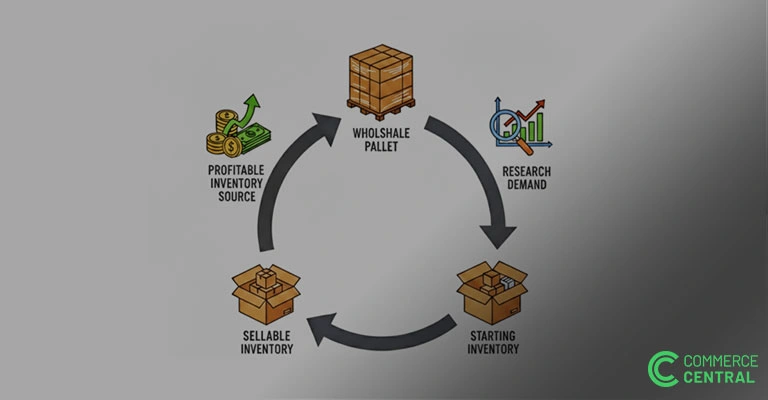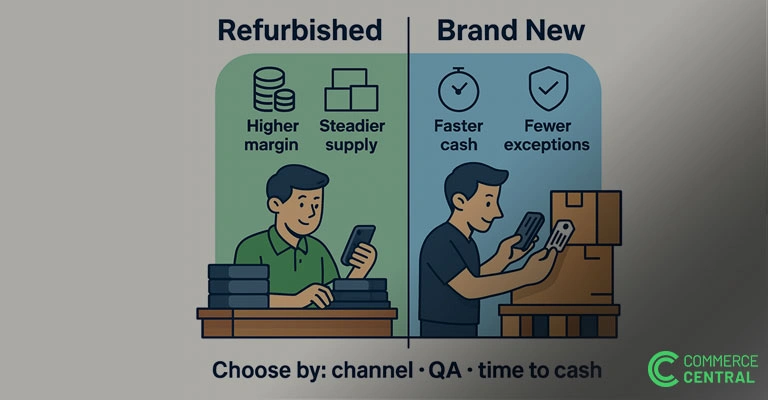
Wholesale Pallets for Sale: A Playbook for New Resellers
Find out how to source products smartly! Our wholesale pallets for sale guide helps new resellers buy confidently and start their eCommerce journey right.

Dollar stores and discount shops run on trust and value. Your customers expect new or like-new items priced low but perceived high. That means your sourcing strategy needs to deliver clean, consistent, affordable inventory with packaging intact and products people actually want to buy. Here’s how to get it right.
You’re not a bin store, you can’t dump broken items or expired goods onto shelves. What works best for you are liquidation sources offering new, unopened, excess stock. Look for lots marked:
These items may have sat on store shelves but were never sold. They're usually still in good condition, sometimes even with retail tags or original packaging.
At Commerce Central, discount store buyers filter for overstock and shelf pull conditions to avoid salvage and returns. That way, your store stays clean and trustworthy.
If you’re selling everything at $1, $3, or $5 — you have to do the math on each product before you buy. If a liquidation lot averages $1.50 per item, it only makes sense if you can retail that item at $3 or more. That’s why discount store buyers need to carefully analyze manifests or pricing per unit.
Commerce Central helps you evaluate lots by category, and cost-per-unit, making it easier to stick within your pricing model.
Items like health and beauty, food, or seasonal inventory may be deeply discounted but that’s only a deal if they’re actually usable. Watch out for:
Commerce Central includes seller-supplied manifests and condition ratings to help you steer clear of risky loads. Whether you're sourcing from local vendors or participating in online liquidation auctions, verifying the condition of items is key.
Your margins are slim, and your shelf space may be tight. So, rather than buying a full truckload of one item, start with case packs or smaller pallets to see what sells. Many discount store pros use this approach:
With Commerce Central’s case pack filters and low minimums from trusted liquidation suppliers, you can trial new categories without overcommitting.
Your customers are loyal when they get value and consistency. If they buy a $3 item that feels like it should’ve cost $10, they’re coming back. But if they buy something cheap that breaks or feels sketchy, they may not.
That’s why sourcing from verified liquidators matters. Commerce Central pre-vets sellers and shows detailed condition info so you can stock your shelves with confidence.
Discount store owners using Commerce Central get:
Whether you run a dollar store, a $5-and-under shop, or a regional discount chain, Commerce Central helps you source smarter and sell with confidence.
Ready to start sourcing shelf-pull and closeout lots? Explore verified discount store inventory at www.commercecentral.io

Find out how to source products smartly! Our wholesale pallets for sale guide helps new resellers buy confidently and start their eCommerce journey right.

Refurbished vs. brand-new electronics: Discover the smart buyer’s framework for B2B resale, balancing margin, speed, and inventory flexibility

Offers or open auctions - which delivers better results? Explore how invite-only bidding can outperform public auctions in achieving better deals and faster sales
Join the only private surplus distribution platform built for trusted Buyers and Sellers.